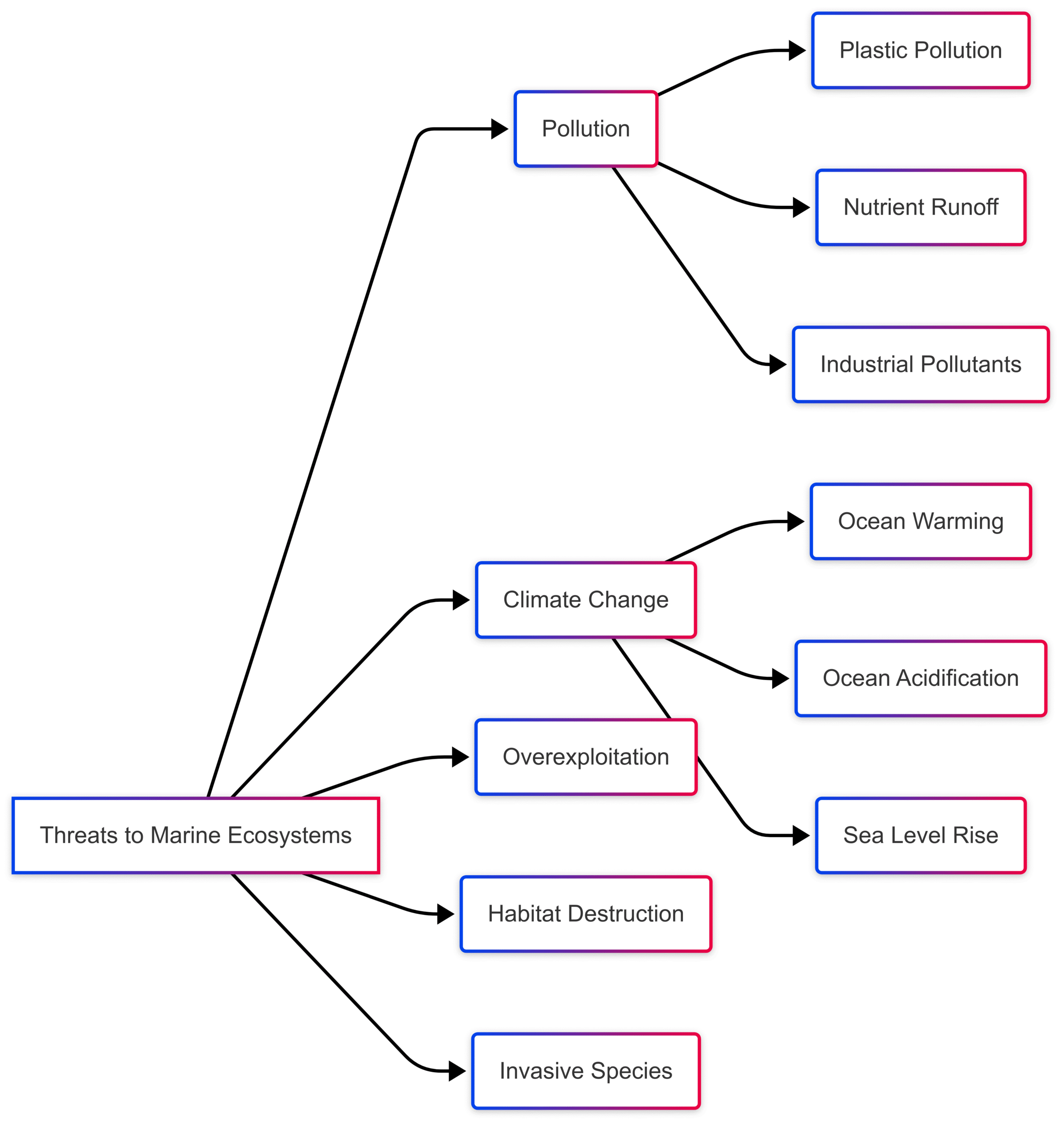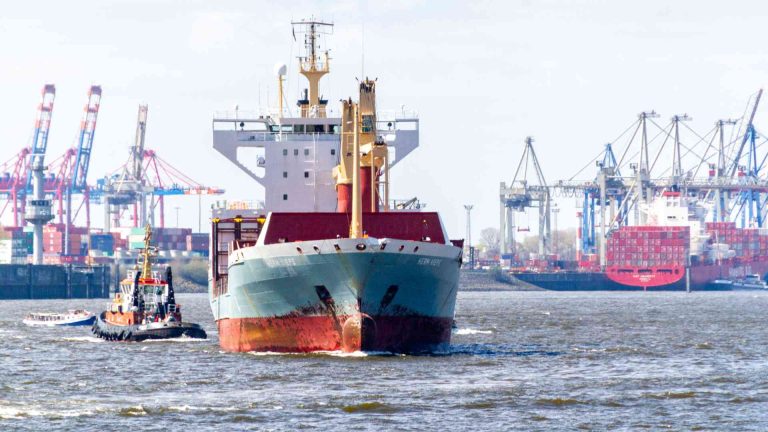The Importance of Marine Ecosystems
Discover the vital role of marine ecosystems in global health, biodiversity, and economy, and learn about threats and conservation efforts to protect our oceans.
Marine ecosystems are the lifeblood of our planet, encompassing vast and intricate networks of organisms and environments that span oceans, seas, and coastal regions. Covering 71% of Earth’s surface and containing 97% of its water, oceans are not only a dominant feature of our planet but also a critical component of global health, economic stability, and environmental balance. These dynamic systems provide essential goods and services, including food, oxygen, climate regulation, and biodiversity, while supporting human livelihoods and cultural heritage. However, marine ecosystems face unprecedented threats from pollution, climate change, overexploitation, and habitat destruction. This article explores the multifaceted importance of marine ecosystems, the challenges they face, and the urgent need for conservation to ensure their sustainability.
Understanding Marine Ecosystems
Marine ecosystems are complex, interconnected communities of living organisms interacting with their physical environments in oceans, seas, and coastal zones. They include diverse habitats such as coral reefs, kelp forests, mangrove forests, seagrass beds, and deep-sea trenches, each supporting unique communities of marine life. From microscopic phytoplankton to massive whales, these ecosystems host an extraordinary array of species, many of which remain undiscovered.
Key Habitats in Marine Ecosystems
- Coral Reefs: Often called the “rainforests of the sea,” coral reefs are vibrant ecosystems built by calcium carbonate secretions from tiny marine animals called coral polyps. They support 25% of all marine species, providing food, shelter, and breeding grounds. Coral reefs are found in tropical waters, such as the Great Barrier Reef in Australia, and are critical for biodiversity and coastal protection.
- Kelp Forests: These underwater forests, formed by large brown algae called kelp, thrive in cold, nutrient-rich waters. Kelp forests provide habitat for species like sea otters, fish, and invertebrates, while also stabilizing coastal ecosystems by reducing wave energy.
- Mangrove Forests: Found in tropical and subtropical coastal regions, mangroves are salt-tolerant trees that bridge land and sea. Their intricate root systems serve as nurseries for juvenile fish, protect shorelines from erosion, and support diverse bird populations.
- Seagrass Beds: These underwater meadows of flowering plants are vital for stabilizing sediments, improving water quality, and providing food for herbivores like sea turtles and manatees.
- Deep-Sea Trenches: The deepest parts of the ocean, such as the Mariana Trench, host unique species adapted to extreme conditions of darkness, high pressure, and cold temperatures. These ecosystems are critical for understanding life’s resilience and potential biotechnological applications.
Components Driving Ecosystem Health
Marine ecosystems rely on several key components to maintain their complexity and resilience:
- Nutrient Cycling: Nutrients like nitrogen and phosphorus fuel phytoplankton growth, forming the base of the marine food web. These cycles ensure energy flow and support higher trophic levels, from zooplankton to large predators.
- Water Temperature: Species are adapted to specific temperature ranges. For instance, coral reefs thrive in warm waters but are highly sensitive to temperature increases, which can trigger coral bleaching.
- Sunlight Availability: Sunlight drives photosynthesis in shallow ecosystems, enabling primary producers like algae and seagrasses to support diverse food webs.
- Physical Ocean Structure: Features like underwater trenches, canyons, and continental shelves create diverse habitats that support specialized communities and influence nutrient upwelling.

The Role of Marine Ecosystems in Global Health
Marine ecosystems are indispensable to the planet’s environmental, economic, and social well-being. Their contributions extend far beyond the ocean, influencing global systems and human life.
Food Security
Oceans are a primary source of protein for over 3 billion people, particularly in coastal and developing regions. Fisheries and aquaculture provide approximately 17% of global animal protein, with fish like tuna, salmon, and cod being dietary staples. The fishing industry employs around 60 million people worldwide, supporting livelihoods and local economies. For example, small-scale fisheries in regions like Southeast Asia and Africa are critical for community food security and income.
Climate Regulation
Marine ecosystems play a pivotal role in mitigating climate change. Phytoplankton, microscopic plants in the ocean, absorb roughly 25% of global carbon dioxide (CO₂) emissions through photosynthesis, acting as a significant carbon sink. Oceans store 50 times more CO₂ than the atmosphere, helping to regulate global temperatures and weather patterns. Additionally, coastal habitats like mangroves and salt marshes sequester carbon at rates up to 10 times higher than terrestrial forests per unit area.
| Ecosystem | Carbon Sequestration Rate (tons/ha/year) |
|---|---|
| Mangroves | 6–8 |
| Salt Marshes | 2–4 |
| Seagrass Beds | 1–2 |
| Terrestrial Forests | 0.5–1 |
Oxygen Production
Marine ecosystems, particularly phytoplankton, produce approximately 50% of the Earth’s oxygen. Through photosynthesis, these organisms convert CO₂ into oxygen, making oceans a critical component of the planet’s breathable atmosphere. This oxygen production is vital for all aerobic life, underscoring the ocean’s role as the “lungs of the planet.”
Biodiversity
Marine ecosystems are among the most biodiverse on Earth, hosting an estimated 50–80% of all life forms. Coral reefs alone support over 1 million species, while deep-sea ecosystems harbor unique organisms with potential applications in medicine and biotechnology. Biodiversity ensures ecosystem resilience, as diverse species perform complementary roles, such as predation, nutrient cycling, and habitat creation, maintaining ecological balance.
Coastal Protection
Coastal habitats like mangroves, coral reefs, and wetlands act as natural barriers, protecting shorelines from erosion, storm surges, and flooding. For instance, mangroves can reduce wave heights by up to 66%, safeguarding coastal communities and infrastructure. The economic value of this protection is immense, with coral reefs alone estimated to save $4 billion annually in avoided damages.
Economic Contributions
Marine ecosystems generate trillions of dollars in economic value annually through industries like fishing, tourism, and shipping. The global fishing industry is valued at over $400 billion per year, while marine tourism, including diving and coastal recreation, contributes $1 trillion to the global economy. Additionally, marine resources support emerging sectors like renewable energy (e.g., tidal and wave energy) and pharmaceuticals, with compounds from marine organisms used in treatments for cancer and heart disease.
| Sector | Economic Value (USD, Annual) |
|---|---|
| Fisheries | $400 billion |
| Marine Tourism | $1 trillion |
| Shipping | $1.5 trillion |
| Pharmaceutical Compounds | $10–20 billion |
Cultural and Recreational Value
Oceans hold profound cultural significance for many communities, from indigenous groups to coastal societies. They inspire art, traditions, and spiritual practices. Recreationally, oceans attract millions for activities like diving, snorkeling, and surfing, contributing to mental well-being and local economies.
Threats to Marine Ecosystems
Despite their importance, marine ecosystems face severe threats that jeopardize their health and functionality. These challenges, largely driven by human activities, require urgent action to mitigate.
Pollution
Pollution is a pervasive threat to marine ecosystems. Key forms include:
- Plastic Pollution: Over 8 million metric tons of plastic enter the oceans annually, harming marine life through ingestion and entanglement. Microplastics, tiny fragments less than 5mm, accumulate in food chains, posing risks to both marine species and humans.
- Nutrient Runoff: Agricultural fertilizers and untreated sewage cause eutrophication, leading to algal blooms that deplete oxygen and create dead zones. The Gulf of Mexico’s dead zone, for instance, spans over 15,000 km².
- Industrial Pollutants: Heavy metals, oil spills, and chemical discharges contaminate water, disrupt ecosystems, and accumulate in marine organisms, affecting human health through seafood consumption.
Climate Change
Climate change profoundly impacts marine ecosystems through:
- Ocean Warming: Rising sea temperatures cause coral bleaching, with 14% of global coral reefs lost in recent decades. Warmer waters also disrupt fish migration and breeding patterns.
- Ocean Acidification: Increased CO₂ absorption lowers ocean pH, hindering the ability of organisms like corals, shellfish, and plankton to build calcium carbonate shells and skeletons.
- Sea Level Rise: Melting ice caps and thermal expansion contribute to rising sea levels, threatening coastal habitats and communities. The IPCC projects up to 1 meter of sea level rise by 2100.
Overexploitation
Overfishing depletes fish stocks, with one-third of global fisheries currently overexploited. Unsustainable practices, such as bottom trawling, destroy habitats and disrupt food webs. For example, the collapse of cod fisheries in the North Atlantic led to economic and ecological devastation.
Habitat Destruction
Coastal development, dredging, and pollution destroy critical habitats like mangroves and coral reefs. Globally, 50% of mangroves have been lost since the 1980s, reducing coastal protection and biodiversity.
Invasive Species
Non-native species, introduced via ballast water or human activities, disrupt ecosystems by outcompeting native species. For instance, the lionfish in the Caribbean has decimated native fish populations, altering reef ecosystems.

Conservation Efforts and Solutions
Protecting marine ecosystems requires a multifaceted approach involving policy, technology, and public engagement. Key strategies include:
Marine Protected Areas (MPAs)
MPAs restrict human activities in designated areas to protect ecosystems and species. Currently, 8% of global ocean areas are protected, with initiatives like the Seychelles’ commitment to protect 30% of its exclusive economic zone setting a strong example. MPAs have been shown to increase fish biomass by up to 670% in protected areas.
Sustainable Fishing Practices
Regulations like fishing quotas, size limits, and gear restrictions promote sustainable fisheries. The EU’s Common Fisheries Policy, for instance, aims to restore fish stocks by reducing discards and enforcing quotas. Community-based closures, as practiced in Madagascar, have increased catches by up to 20%.
Pollution Reduction
Efforts to reduce pollution include banning single-use plastics, improving wastewater treatment, and regulating agricultural runoff. International agreements like the MARPOL Convention address marine pollution from ships, reducing oil spills and waste discharge.
Climate Action
Mitigating climate change is critical for marine ecosystem health. Reducing CO₂ emissions through renewable energy adoption and international agreements like the Paris Accord helps address ocean warming and acidification. Reforestation of mangroves and seagrass beds enhances carbon sequestration.
Public Awareness and Education
Raising awareness through campaigns like World Oceans Day fosters public support for conservation. Educational programs encourage sustainable seafood consumption and responsible tourism, empowering individuals to contribute to ocean health.
Technological Innovations
Technology plays a growing role in conservation:
- Remote Sensing: Satellites monitor sea surface temperatures, algal blooms, and illegal fishing activities.
- Underwater Robotics: Drones and submersibles explore deep-sea ecosystems, aiding research and monitoring.
- DNA Analysis: Environmental DNA (eDNA) helps track species diversity and detect invasive species.
The Economic Value of Marine Ecosystems
Marine ecosystems provide immense economic benefits, often referred to as “ecosystem services.” These services are valued at trillions of dollars annually, underscoring the need for sustainable management.
Fisheries and Seafood
The global fishing industry supports millions of jobs and provides protein for billions. Sustainable management could increase fishery yields by up to 40%, ensuring long-term economic stability. For example, improved management could feed an additional 700 million people daily by 2050.
Tourism and Recreation
Marine tourism, driven by coral reefs, beaches, and marine biodiversity, generates significant revenue. The Great Barrier Reef alone contributes $6.4 billion annually to Australia’s economy. Protecting these ecosystems ensures continued tourism revenue.
Emerging Opportunities
Marine ecosystems offer potential for renewable energy through tidal and wave power, with global potential estimated at 500 GW. Additionally, marine-derived pharmaceuticals, such as anti-cancer drugs from sponges, represent a growing market valued at $10–20 billion annually.
The Future of Marine Ecosystems
The future of marine ecosystems hinges on collective action. The United Nations’ Decade of Ocean Science for Sustainable Development aims to enhance ocean mapping and understanding, with less than 10% of the ocean currently explored. Achieving Sustainable Development Goal 14 (Life Below Water) requires global cooperation to conserve and sustainably use marine resources.
Innovative solutions, such as integrated coastal zone management and ecosystem-based approaches, balance competing interests like fishing, tourism, and conservation. The UNEP Regional Seas Programme, established in 1974, supports 18 regional conventions to reduce pollution and promote sustainable management. Success stories, like Haiti’s designation of nine MPAs and Madagascar’s temporary fishery closures, demonstrate the potential for positive change.
Conclusion
Marine ecosystems are indispensable to global health, supporting food security, climate regulation, oxygen production, biodiversity, and economic prosperity. Their intricate habitats and processes sustain life on Earth, yet they face severe threats from pollution, climate change, overexploitation, and habitat destruction. By prioritizing conservation through MPAs, sustainable practices, pollution reduction, and technological innovation, we can safeguard these vital systems. Understanding and valuing the economic contributions of marine ecosystems—estimated in the trillions annually—provides a compelling case for action. Protecting our oceans ensures a healthy planet and a sustainable future for generations to come.
Happy Boating!
Share The Importance of Marine Ecosystems with your friends and leave a comment below with your thoughts.
Read The Importance of Boat Hot Water Heaters and Why You Need One until we meet in the next article.






